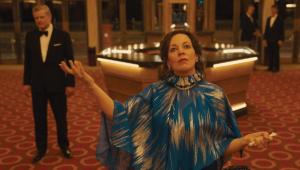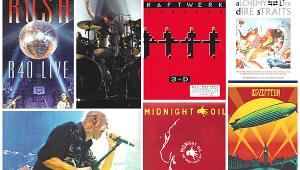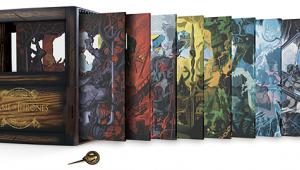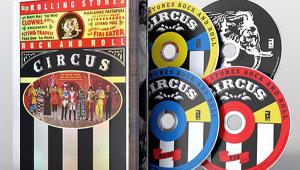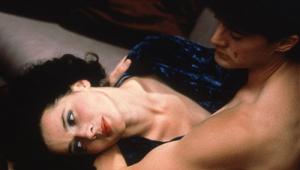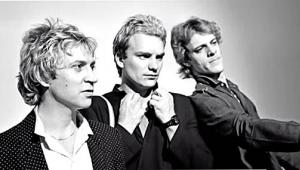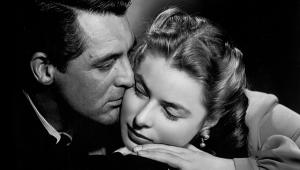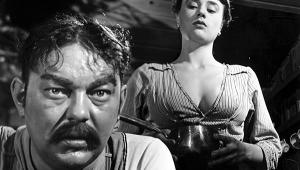Standing in the Shadows of Motown
Picture*** 1/2
Sound****
Film****
My earliest memories of the classiest music of my generation were piped from Detroit to Philly through the AM radio of a red Chevy Malibu. I wasn't close to being old enough to drive, but Mark was apparently old enough to smoke. I was old enough to lecture him, but we shut up when the music came on, and I followed his mentoring clues on how to groove to the sounds. Standing in the Shadows of Motown brought me back to that point in my life harder than a slap from heaven.
 The Motown sound is unmistakable, unforgettable, and, for many, inexplicable. Some credit tube gear, analog recorders, and the quality of the early Fender and Gibson electric guitars for the uniqueness of that sound. But if, as guitar players love to say, "tone is in the fingers," then Motown's sound simply comes from the incredible musicians who created it: the Funk Brothers, as they were known in the biz. For over a decade, this handful of jazzers put their power to play behind countless hits by the Four Tops, Marvin Gaye, Martha and the Vandellas, Smokey Robinson and the Miracles, the Supremes, the Temptations, Mary Wells, and Stevie Wonder, to name the best. In the basement of the house at 2648 West Grand Boulevard—aka Studio A, Hitsville, USA—Berry Gordy, founder of Motown Records, ran the all-night sessions at which soul music's history and glory were invented.
The Motown sound is unmistakable, unforgettable, and, for many, inexplicable. Some credit tube gear, analog recorders, and the quality of the early Fender and Gibson electric guitars for the uniqueness of that sound. But if, as guitar players love to say, "tone is in the fingers," then Motown's sound simply comes from the incredible musicians who created it: the Funk Brothers, as they were known in the biz. For over a decade, this handful of jazzers put their power to play behind countless hits by the Four Tops, Marvin Gaye, Martha and the Vandellas, Smokey Robinson and the Miracles, the Supremes, the Temptations, Mary Wells, and Stevie Wonder, to name the best. In the basement of the house at 2648 West Grand Boulevard—aka Studio A, Hitsville, USA—Berry Gordy, founder of Motown Records, ran the all-night sessions at which soul music's history and glory were invented.
While the Funk Brothers were the common denominator in Motown's golden years, most people have never heard of them. It wasn't till the early 1970s, when Marvin Gaye began crediting musicians on his records, that the public finally learned who was behind the Motown sound.
Standing in the Shadows of Motown is part documentary, part concert movie, part historical reenactment, and it's all amazing to watch. Most of the surviving Funk Brothers appear, telling their stories through interviews; cutaways to music producer and hair stylist Don Was and vocalist Martha Reeves fill in the bigger picture. The Brothers pay homage to those other players who didn't get to take life's journey this far—the concert stage is filled with empty seats bearing photographs of departed brethren.
While they may have gone their separate ways after Berry Gordy unceremoniously shut the doors of Studio A and moved Motown to Los Angeles, this film makes it abundantly clear that the guys, white and black, deserved to be called brothers. At one point, bassist Bob Babbitt's tears silently express the love and respect these men have for each other.
The best parts of the movie are the sections of concert footage shot at the Royal Oaks Theater in Detroit, where the Funk Brothers reassembled to put on one last show, just for this film. Think of it as The Last Boogie. They proved that they're still capable of belting out the tunes with as much energy and style as they had in their youth. Some of the guest artists might seem like odd choices—until you hear them sing, and realize how strongly Motown influenced their development. Joan Osborne, Gerald Levert, and Chaka Khan are my favorite interpreters here, as they somehow succeed in preserving the music's original intentions while casting their own shadows. Funkadelic, baby!
The visual quality is extremely good. The black level in the concert footage is excellent, and the picture crosses the boundary between the ordinary and the punchy. The depth of field captured by the cinematography is accurately conveyed in the transfer. The sound, whether in DTS 6.1 ES or Dolby Digital 5.1 EX, is excellent. The transitions from interview segments to concert footage are expertly handled, drawing you into the story and then rewarding you with the songs.
Despite its plain packaging, this two-disc set is packed with special features, and includes a complete version of the movie on each disc. Disc 2 contains a 1024x768 "high-resolution" (not to be confused with high-definition) version playable, at present, only on a computer equipped with Microsoft Windows Media 9 software. If that excites you, you need to sell your computer and buy a guitar, as Tom Petty says. The other extras are far more interesting: a dinner party with bandmembers reminiscing; a flip-book biography that combines video segments with text, complete down to the players' favorite axes; a multi-angle jam session; a trailer for The Temptations' movie, The Temptations; and plenty more.
Standing in the Shadows of Motown is a gift—a Thank You to the people who defined the essence of soul music, and have influenced every generation since. I'll never tire of watching this marvelous film.—FM
- Log in or register to post comments
